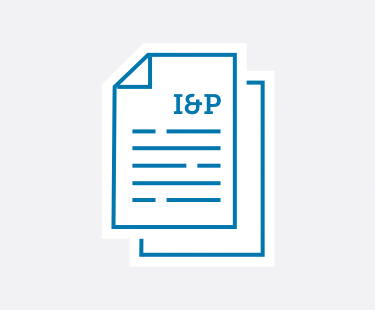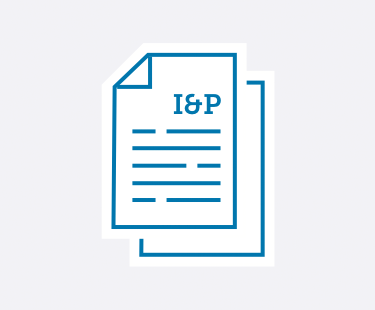

Learn practical strategies to handle emerging trends and leadership challenges in private schools.
No matter if you’re a School Head, Admission Director, Development Director, Board member, or any other private school administrator—Ideas & Perspectives®, ISM’s premier private school publication, has strategic solutions for the pervasive problems you face.
- Tuition not keeping pace with your expenses? In I&P, explore how to use strategic financial planning to create your budget and appropriately adjust your tuition.
- Enrollment dropping off? Discover how to implement the right admission and enrollment management strategies that engage your community—and fill your classrooms.
- Trouble retaining teachers? Learn how you can best support your teachers using ISM’s Comprehensive Faculty Development framework. Your faculty members will become more enthusiastic about their roles—which ultimately improves student outcomes.
- Fundraising campaigns not as successful as you’d hoped? Implement ISM’s practical advice and guidance to build a thriving annual fund, construct an effective capital campaign, and secure major donors—no matter your community size or location.
- Not sure how to provide professional development—for you and your staff? Learn ways to develop and fund a successful professional development strategy. You can improve teacher-centered satisfaction and growth, which in turn strengthens student-centered learning.
- Problematic schedule? You can master the challenges of scheduling with the help of ISM’s practical advice, based on our experience with hundreds of schools and our time-tested theories.
- And so much more.
I&P has shared targeted research, up-to-date insight, and sound theory with school leaders since 1975. More than 8,500 private school decision-makers find the answers to their schools’ administrative and governance matters in our advisory letter. We give you the strategic answers you need.
As an ISM Silver or Gold member, you not only receive issues online and in print 10 times a year, but you have access to 900+ articles in our web archive. Need help? It’s at your fingertips! Learn more and sign up for ISM's membership here.
Search
See the articles from our latest issue of Ideas & Perspectives.
Past Parents: Keep in Touch With This Key Resource
Volume 43 No. 10 // August 14, 2018
When your students move on to other schools or college, do you lose touch with their parents? If so, you overlook a valuable resource—a constituency that has great and varied potential to support your school in marketing, fundraising, and overall advancement.
1. Already a member? Click here to login.
2. Not a member? Click here to become a member.
3. Not sure? We'll help you figure it out.
Annual Statements Show the Value of Employee Benefits
Volume 43 No. 9 // July 23, 2018
As the School Head or Business Manager, you know how much the school spends to provide employee benefits. It’s frustrating when faculty, staff, and administrators do not take advantage of these programs to the fullest, don’t value them, or, worse yet, don’t even know they exist. This tends to be a reality in most organizations—not just schools. In our fast-paced society, unless people perceive that the information directly pertains to them, it may sometimes be hard to gain their attention.
1. Already a member? Click here to login.
2. Not a member? Click here to become a member.
3. Not sure? We'll help you figure it out.
Four Capital Campaign Essentials for Every Trustee
Volume 43 No. 9 // July 23, 2018
Capital campaigns are simultaneously exciting and anxiety-producing, especially for those in leadership positions. You, as Board President, Chair of the Committee on Trustees, or Chair of the Development Committee, must keep certain essentials in mind, before and during the capital campaign. This article focuses on two critical “early actions,” followed by a list of four essentials that every Trustee needs to embrace for ideal campaign outcomes when the campaign commences.
1. Already a member? Click here to login.
2. Not a member? Click here to become a member.
3. Not sure? We'll help you figure it out.
Preparing Your Board for an Accreditation Visit
Volume 43 No. 9 // July 23, 2018
Your next accreditation visit is 12–18 months away. You, as Board President and/or Chair of the Committee on Trustees (COT), assisted by your School Head, should consider the steps needed to prepare your Board for that visit. For most schools and with most accreditation agencies, the following should comprise key ingredients in that preparation process.
1. Already a member? Click here to login.
2. Not a member? Click here to become a member.
3. Not sure? We'll help you figure it out.
Create a Digital Workflow to Maximize Marketing Resources
Volume 43 No. 9 // July 23, 2018
Private-independent school leaders realize the value of professionally staffing their marketing communications function. And, while Boards and School Heads should be applauded for investing in a Marketing Communications Director or similar position,* many cannot dedicate the financial resources necessary to expand the operation beyond one full-time employee.
1. Already a member? Click here to login.
2. Not a member? Click here to become a member.
3. Not sure? We'll help you figure it out.
Is Tuition Remission a Legitimate Employee Recruitment and Retention Strategy?
Volume 43 No. 8 // June 25, 2018
Many school leaders view tuition remission as a teacher and staff recruitment and retention tool, and a means of keeping competitive with other private-independent schools. However, tuition remission often turns the employee-school relationship into a business transaction. School Heads and Boards often claim that they have to offer this perk—otherwise good candidates will be lured to other schools. And it’s not just teachers and staff. This benefit is often an intrinsic part of the contract for the Head and other administrators as well.
1. Already a member? Click here to login.
2. Not a member? Click here to become a member.
3. Not sure? We'll help you figure it out.
Reinvent Your Whole-Faculty Meetings
Volume 43 No. 8 // June 25, 2018
Whole-faculty meetings—the phrase alone makes eyes glaze over. Administrators often view these sessions as a necessary evil. Teachers routinely consider them one of the least productive uses of their time.
1. Already a member? Click here to login.
2. Not a member? Click here to become a member.
3. Not sure? We'll help you figure it out.
How to Provide Predictability and Support to the Division Head
Volume 43 No. 8 // June 25, 2018
Predictable and supportive environments are the bedrock on which all great schools are built. We have observed schools suffering from poor leadership and precarious finances—but the culture often keeps a school going steady. Schools that once had strong financial stability began to erode when the predictable and supportive culture was overtaken by toxic elements.
1. Already a member? Click here to login.
2. Not a member? Click here to become a member.
3. Not sure? We'll help you figure it out.
The New Board President
Volume 43 No. 7 // June 4, 2018
You, as newly elected Board of Trustees President, may assume that leadership of private-independent-school Trustees is similar to leadership in other organizational settings. There are indeed similarities with some other kinds of leadership roles, including these. A President brings her or his own “management style” to the post. This tone-setting role is present to some degree in any organization, depending on its exact purpose(s) and structure. A President selects and appoints those who will exercise second-level management and leadership within the Board. Any organization larger than, say, a half-dozen individuals, needs this kind of action from the designated leader. A private-independent school Board of Trustees President can sometimes strongly influence the direction of the larger organization—the school itself—from a strategic perspective. This is analogous to other governing body leadership contexts, both in for-profit and nonprofit settings.
1. Already a member? Click here to login.
2. Not a member? Click here to become a member.
3. Not sure? We'll help you figure it out.
Should You Re-enroll Students Whose Parents Owe Tuition?
Volume 43 No. 7 // June 4, 2018
Private-independent schools often face the sensitive issue of whether to re-enroll a current student whose parents owe tuition. A school wants to maintain its primary focus on the best interests of the student. Yet, the school simultaneously has a broader fiduciary responsibility to all the school’s families to fund and sustain mission excellence over time.
1. Already a member? Click here to login.
2. Not a member? Click here to become a member.
3. Not sure? We'll help you figure it out.



